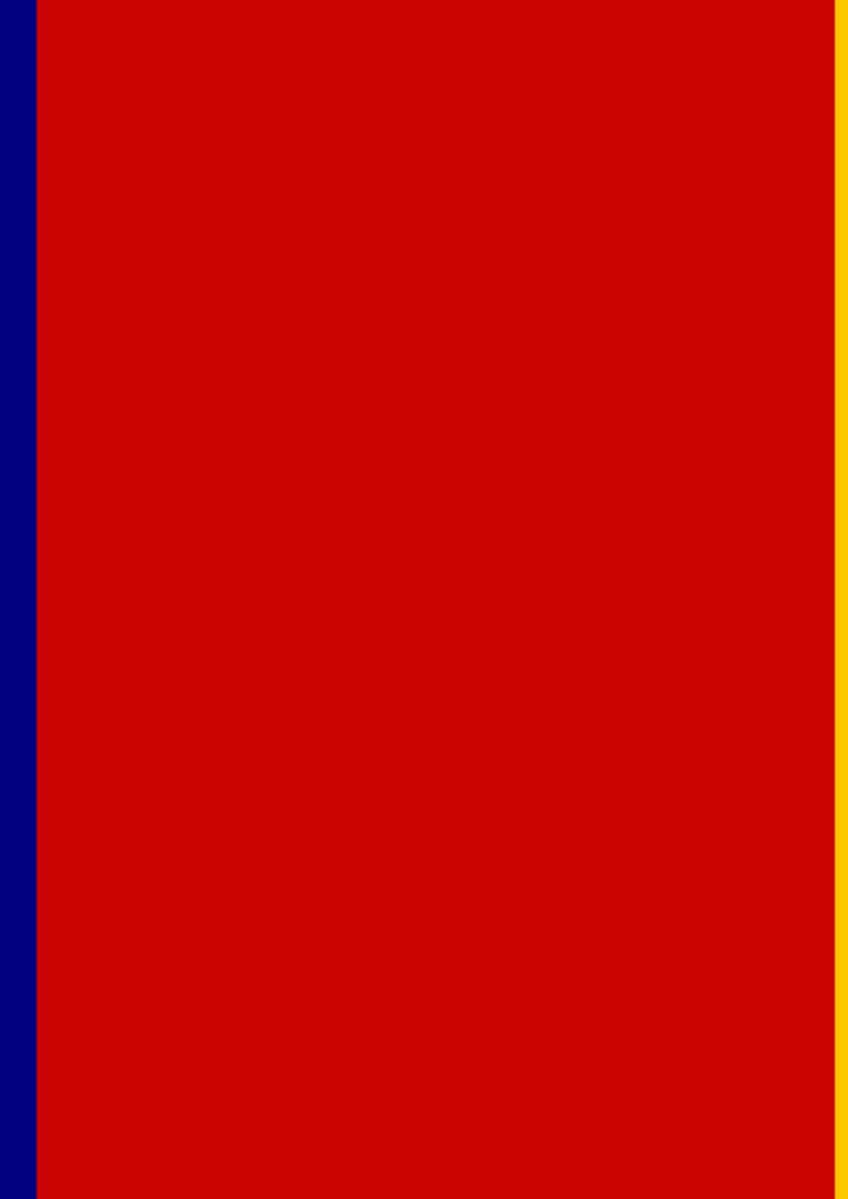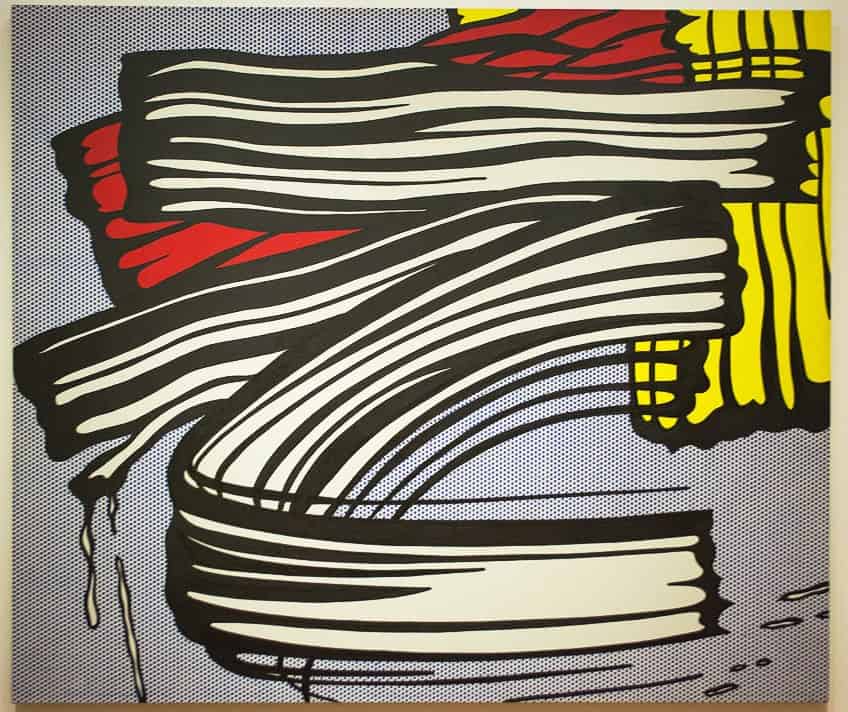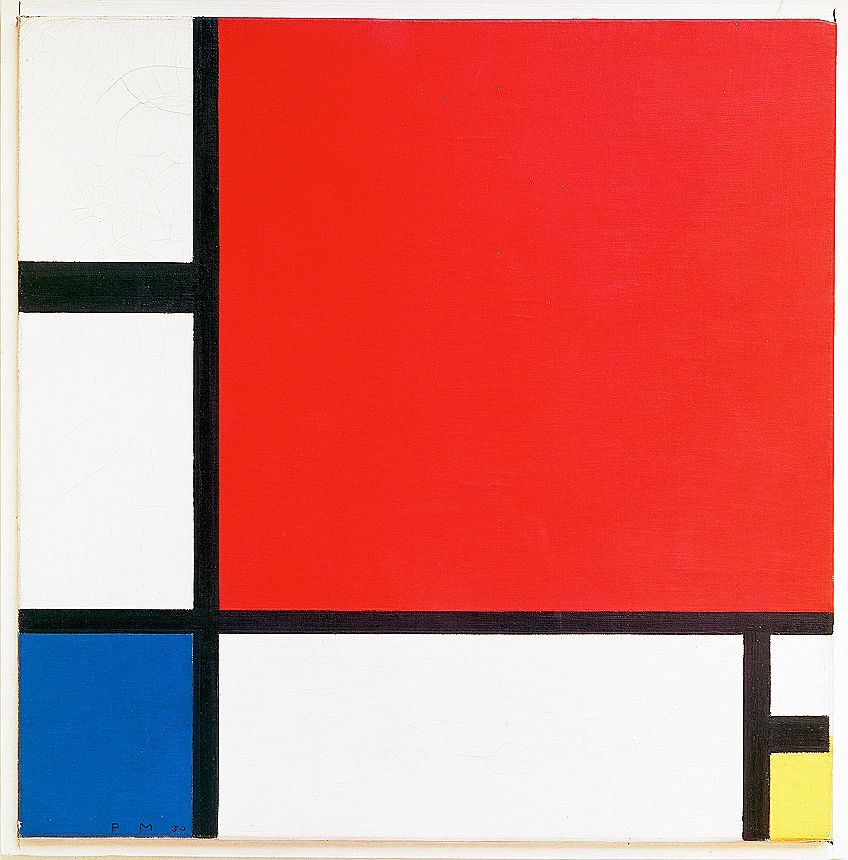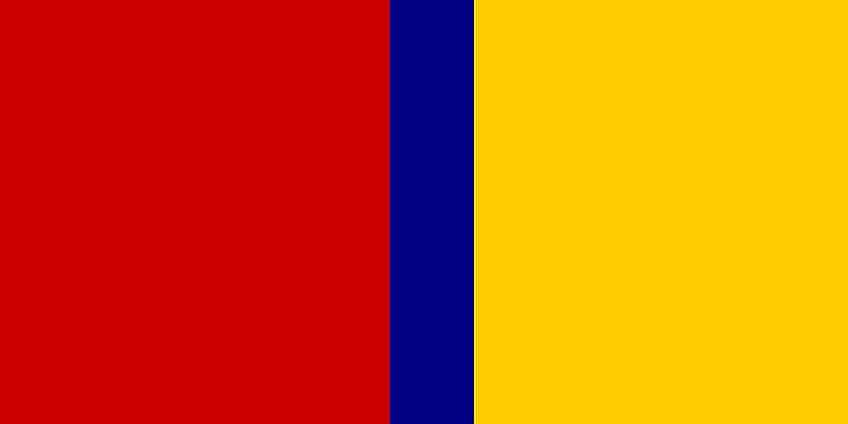Color Field Painting – Discover the Famous Color Block Art Style
What is Color Field painting? The Abstract art subgenre known as “Color Field painting” arose in New York City in the 1940s and 1950s. The Color Field painting definition states that Color Field painters aimed to create large areas of solid, flat colors that are distributed across the canvas to produce a flattened pictorial plane. The Color Field painting technique emphasizes overall uniformity of form and execution above gestures, brushwork, and processes.
Contents
What Is Color Field Painting?
Color Field painters arose in Canada, the United Kingdom, the United States, Australia, and other countries in the late 1950s and early 1960s, utilizing formats such as targets, stripes, and basic geometric patterns, as well as landscape and nature references. The Color Field painting technique was pioneered in the late 1940s by Barnett Newman, Mark Rothko, and Clyfford Still, who were all looking for a form of abstraction that could offer mythological, modern art while also conveying a longing for transcendent moments and infinity.
Color Field painters eschewed any indication of figuration in order to maximize the expressivity of color by using it in large fields that could engulf the observer when viewed closely.
Their artwork influenced many Post-Painterly Abstraction artists, including Morris Louis, Helen Frankenthaler, Jules Olitski, and Kenneth Noland, although the form was more essential to subsequent color Field painters than mythological content.
The History of the Color Field Painting Technique
In the late 1940s, Barnett Newman, Mark Rothko, and Clyfford Still were all working separately in the approach of color Field abstraction. Still is often credited with pioneering the genre with a series of works he displayed in 1947, but Newman was also influential in providing early conceptual contributions to the movement. In 1947, he also organized The Ideographic Picture for Betty Parsons Gallery, which brought together the three aforementioned artists and lead to the emergence of contemporary American art as a modern alternative to the primitive art movement.
Early Days of the Color Field Painting Genre
“It was encapsulated in the notion of the ideograph, which is defined as a symbol, character or figure that communicates the concept of an object without stating its name”, according to a dictionary Color Field painting definition. Newman was looking for an abstract art form that would exclude any figurative elements.
If regarded as a living object, an abstract form may be a conduit for an abstracted thought complex.

It would appear more present and real than a purely abstracted shape from the natural world or an object. Because of the successful approaches that Rothko, Newman, and Still were taking, Abstract Expressionism began to separate into two distinct trends by the late 1940s: gesture painting and Color Field painting. Nevertheless, this formal divide was not widely acknowledged by critics until the 1950s.
The Emergence of the Color Field Painting Technique
While Rothko, Still, and Newman all created distinct interpretations of their work’s themes, Newman provided the most popular explanation in his thesis The Sublime is Now (1948). It leaned on Edmund Burke’s 18th-century aesthetics to argue that only the sublime was fit for a modern society consumed by the fear of war and the prospect of being bombed. He believed that European artwork had always strived for the attractive, but that it was ultimately time to renounce that pursuit.
Clement Greenberg was maybe the first to see and appreciate the rise of the Color Field painting technique.
He explored it the most in his 1955 article, American-Type Painting, in which he stated that the style promoted a contemporary painting trend to employ color in large swathes or fields. He thought this was especially significant since it reverted to one of the Impressionists’ most fundamental advancements: the suppressing of value contrasts (contrasts of bright and dark colors) to express depth and dimension.
Many Abstract Expressionist artists used an “all-over” method of composition, using the canvas as a field instead of a window through which to represent individuals, although none went to the extent of the Color Field painters.
Later Developments of Color Field Painting
A new breed of Color Field painters was rising by the late 1950s. The new group featured painters like Morris Louis, Kenneth Noland, and Jules Olitski, and was partly influenced by Helen Frankenthaler’s stained abstractions and Greenberg’s critique. These painters’ interests were more formalist than the Abstract Expressionists’, usually brazenly ornamental, and certainly less deeply mystical.
By pouring acrylic and oil paints over an unprimed canvas, painters like Frankenthaler enabled their colors to seep into the canvas instead of remain on top of it, as Willem de Kooning’s colors would, where they pile up into little mountainous heaps.
This approach imparted color consistency and a feeling of smooth, flat uniformity to their works, as well as a wispy, fleeting dreaminess. As the 1960s began, the Post-Painterly Abstractionists were among the most renowned Color Field painters. Morris Louis was producing works with a sense of symmetry, which he achieved by pouring color in broad strokes across the canvas’s entire surface. Kenneth Noland began painting his strong geometric forms – principally chevrons and targets – and experimenting with shaped canvases.
Artists like Al Held and Ellsworth Kelly were often labeled as late Color Field painters, even though their works were frequently linked with hard-edge abstraction. Young painters began to move away from Abstract Expressionism aesthetically, exploring novel ways of producing images and new approaches to controlling color and paint.
In the early 1960s, numerous new groups in Abstract art were closely connected and superficially grouped together, despite the fact that they turned out to be drastically distinct in the long term.
Hard-Edge painting, the Washington Color School, Minimalism, Geometric Abstraction, and Color Field were some of the more modern trends and movements that emerged in the early 1960s as answers to the Abstract Expressionism style.
Key Concepts of the Color Field Painters
Color Field painting arose from the late 1940s efforts of various artists to create a new, iconic art form. They wanted a new style that would exclude any hint of depiction to engage with the primordial emotions trapped in old stories instead of the symbols themselves. Clement Greenberg was an outspoken supporter of the style, praising the advancements it made in composition and form.
He maintained that Color Field painting was the way ahead, despite what he viewed as the excessively imitative, academic tendencies of certain action painters.
Color Field painting was a significant step forward in Abstract painting because it was regarded as the first style to eliminate the appearance of a figure sticking out against a background. Rather, ground and figure merge, and the picture’s space imagined as a field, appears to extend beyond the canvas’s limits. Even though Jackson Pollock is synonymous with action painting due to his technique, style, and direct application of color, critics have connected Pollock to both Color Field and action painting. Another critical viewpoint expressed by Greenberg compares Pollock’s allover canvases to Claude Monet’s large-scale Water Lilies created in the 1920s.
According to art critics, the overall approach used in Pollock’s most popular artworks – his drip works of art – come across as huge expanses of built-up linear components, often being interpreted as vast structures of comparably valued paint swathes that could be viewed as all-over fields of drawing and color. They are also closely linked to the massive late Monets that are formed of many layers of similarly valued scumbled and brushed marks that also could be seen as closely valued fields of drawing and color that Monet employed in producing his surfaces.
Jackson Pollock’s utilization of all-over composition has a conceptual and physical relationship to the approach Color Field artists like Rothko, Newman, and Still use to create their unbroken surfaces.
Pollock utilized the process of staining fluid oil paint and house paints into the raw canvas in various works after his signature drip painting phase of 1947 to 1950. In 1951, he produced a collection of semi-figurative black stain works, and in 1952, he created color stain works of art.
Color Field Painting Techniques
The paint handling was a key characteristic that distinguished Color Field painting from Abstract Expressionism. The application of color is the essential fundamental distinguishing process of painting, and Color Field painters altered the way color could be properly applied. Here are a few of the key techniques practiced by Color Field artists.
Stain Painting
Joan Miró was a pioneering and renowned stain painter. Although oil staining was thought to be harmful to the cotton canvas in the long term, Miró’s influence from the 1920s to the 1940s was a source of inspiration to the younger generation. The staining process was one of the factors for the Color Field movement’s popularity. Artists would combine and reduce their paint in pails or coffee can until it was a fluid liquid before pouring it into unprimed canvas, usually cotton duck canvas.
The paint might also be rolled, brushed, flung, sprayed, or poured onto the canvas, where it would seep into the cloth.
As they stained, most painters would create forms and areas. Many different painters used staining as their preferred technique for creating their paintings. Staining and pouring opened the door to breakthroughs and innovative methods of creating and conveying meaning in novel ways for Jackson Pollock, James Brooks, Helen Frankenthaler, Paul Jenkins, Morris Louis, and scores of other artists. With the advent of acrylic paint in the 1960s, the number of painters who stained skyrocketed.
The application of acrylic paint to stain the canvas was more harmless and less destructive to the material than the use of oil paints.
Artist Helen Frankenthaler stated in 1970 of her use of staining that when she first began producing stain paintings, she left big portions of canvas untreated since the canvas itself behaved as aggressively and positively as line, color, or paint. In other words, the ground itself was an element of the medium, thus rather than thinking of it as a backdrop or negative space, that part did not require painting because it was surrounded by paint. The trick was deciding where to keep it, where to fill it, and exactly where to say no more lines or pails of colors.
Spray Painting
Surprisingly few painters embraced the spray gun method in the 1960s and 1970s to generate enormous stretches of color sprayed over their paintings. Jules Olitski, a leader in his spray method that covered his enormous works with layer after layer of varied hues, often gradually shifting color and values in subtle transitions, is one of the painters who skillfully employed spray painting methods. Dan Christensen’s use of the spray process to excellent effect in circles and strands of vivid color; produced in clear, calligraphic patterns over his large-scale works was another significant invention.
The method was utilized by Richard Saba, William Pettet, and Albert Stadler to produce large-scale multi-color fields.
Stripes
Stripes were one of the most common color vehicles utilized by a range of Color Field painters in several styles. Morris Louis, Barnett Newman, Gene Davis, Jack Bush, Kenneth Noland, and David Simpson were also prominent stripe painters.
Barnett Newman’s stripes, which he referred to as zips rather than stripes, were generally vertical, of varying lengths, and infrequently employed.

Noland and Simpson’s stripe canvases were generally horizontal, but Gene Davis mostly created vertical stripe canvases and Morris Louis produced vertical stripe canvases known as Pillars. Jack Bush painted both vertical and horizontal stripes, in addition to angular ones.
Magna Paint
Magna, a unique acrylic paint, was created in 1947 by Sam Golden and Leonard Bocour and modified in 1960 for Morris Louis and other Color Field artists. Pigments are crushed in an acrylic resin using alcohol-based liquids in Magna.
Magna, in contrast to current water-based acrylics, is mixable with mineral spirits or turpentine and dries quickly to a glossy or matte finish.

It was widely utilized by Friedel Dzubas, Morris Louis, and Pop artist Roy Lichtenstein. Magna colors are brighter and more powerful than standard acrylic water-based paints. Louis employed Magna extensively in his Stripe series (1961 – 1962), where pure colors are used and poured straight from the container.
Acrylic Paint
Color Field painting became a viable method of expression about the same time as acrylic paint, the (at the time) new plastic paint, was introduced. It was as though the new painters needed a new painting option, and the artists found it. Oil paint, which has a separate medium that is not water-based, always produces a slick of oil around the edges of the hue. Acrylic paint edges are more defined.
The Color Field painting technique emerged in tandem with the creation of this new paint. Acrylics were originally commercially marketed as mineral spirit-based pigments by Leonard Bocour in the 1950s.
Water-based acrylic paints were later marketed as “latex” household paints, even though acrylic dispersion contains no latex generated from a rubber tree. Interior “latex” house coatings are typically made up of a binder, filler, pigments, and water. Although exterior “latex” household coatings may contain a “co-polymer” blend, the finest outdoor water-based coatings are 100% acrylic. Shortly after water-based acrylics were released as household paints, artists – the earliest of whom were the Mexican muralists – and businesses began to investigate the new binders’ possibilities.
Acrylic artist paint may be diluted with water and utilized as washes in the same way as watercolor paints can, however, the washes dry quickly and permanently.
In the early 1960s, artist-grade acrylic paints were commercially accessible. It turned out to be great for stain painting. Water-soluble acrylic staining caused diluted colors to seep and adhere to raw canvas. Water-based acrylics were effectively employed by artists such as Helen Frankenthaler, Kenneth Noland, Sam Francis, Dan Christensen, Ronnie Landfield, Larry Zox, Sherron Francis, Larry Poons, Ronald Davis, Gene Davis, Sam Gilliam, and others who used it in their new stain, color field works.
Legacy and Influence of Color Field Painting
The 20th-century pictorial legacy is a continuous and entangled stream of influences and complicated interrelationships. The use of broad open fields of emotive color applied in liberal painterly chunks, complemented with loose drawing, first appears in the works of Joan Miró and Henri Matisse in the early 20th century.
The Abstract Expressionists and Lyrical Abstractionists were all influenced by the aforementioned two, as well as Paul Klee, Pablo Picasso, Wassily Kandinsky, and Piet Mondrian.
Legacy
Landscapes by late-19th-century Americans such as Albert Pinkham Ryder and Augustus Vincent Tack, as well as early American Modernists such as Marsden Hartley, Georgia O’Keeffe, Stuart Davis, and Milton Avery, provided valuable precedents and influenced Abstract Expressionists, Color Field painters, and Lyrical Abstractionists. Matisse’s works from 1914 had a huge impact on American Color Field artists in general, notably on Richard Diebenkorn’s Ocean Park paintings. According to art historians, Diebenkorn viewed both Matisse works in 1966 at a Los Angeles exhibition, and they had a huge influence on him and his works.
Miró was one of the 20th century’s most significant artists. Throughout the 1920s and 1930s, he pioneered the method of staining, producing fuzzy, multi-colored hazy backdrops in thinned oil paint, on top of which he put his characters and vast vocabulary of terms and images.
Arshile Gorky publicly admired Miró’s art and produced works that resembled Miró’s until realizing his individuality in the early 1940s. Miró produced vast radiant fields of furiously brushed paint in white, blue, and other monochromatic fields of hues throughout the 1960s, with hazy black spheres and stone-like objects drifting at random.

These works mirrored the younger generation’s Color Field paintings. Jacques Dupin, Miró’s biographer, stated of his work from the early 1960s: “These canvases reveal connections – Miró makes no attempt to hide this – with the investigation of a new generation of artists. Many of these artists, including Jackson Pollock, have recognized their debt to Miró. Miró, for his part, takes an active interest in their activities and never passes up a chance to encourage and assist them. He also does not think it is beneath his character to utilize their discoveries on occasion”.
Following in the footsteps of prominent European modernists like Miró, the Color Field movement spans many decades from the mid-20th century to the early 21st century.
Color Field painting is made up of three distinct but connected generations of painters. The three distinct but connected movements are sometimes referred to as Post-Painterly Abstraction, Abstract Expressionism, and Lyrical Abstraction. Some of the artists created works that link to all three eras and genres. Abstract Expressionists include Color Field pioneers such as Mark Rothko, Jackson Pollock, Still, and Robert Motherwell.
Influence
Artists such as Sam Francis, Helen Frankenthaler, Jules Olitski, and Kenneth Noland belonged to a slightly younger generation, or, in the particular instance of Morris Louis, were artistically associated with that generation’s point of view; they began as Abstract Expressionists but quickly transitioned to Post-Painterly Abstraction.
Newer artists such as Ronald Davis, Frank Stella, Walter Darby Bannard, and Dan Christensen started with Post-Painterly Abstraction and progressed to a new style of Expressionism known as Lyrical Abstraction.

Many of the artists named, as well as many more, have worked in all three styles at some point in their careers. As reflections of the late 1960s zeitgeist and anguish of the era mixed with the gestalt of Post-Painterly Abstraction, Lyrical Abstraction developed, combining the accuracy of the Color Field language with the Abstract Expressionists. Throughout the late 1960s and early 1970s in Europe, Anselm Kiefer, Gerhard Richter, and other artists began making works of powerful expression, fusing abstraction with pictures, including landscape imagery, and representational art, which became known as Neo-Expressionism by the late 1970s.
Color Field painting was one of the most magnificent aesthetic revolutions in modern art. The word refers to artwork with broad swaths of flat, single colors. When various Abstract painters sought to develop a new type of art in the late 1940s, the approach initially emerged. Rather than rendering recognized, illustrated images and structures, they intended to express emotion and ideas just via color. Instead, the painting’s backdrop and foreground merge, and the picture’s space—conceived as a “field”—seems to absorb both the canvases and the viewer’s viewpoint. Abstract Expressionist painters Barnett Newman, Mark Rothko, and Clyfford Still pioneered the style. A whole new generation of Color Field painters had emerged by the late 1950s, and the technique remained fashionable among contemporary artists until the mid-1960s.
Take a look at our Color Block painting webstory here!
Frequently Asked Questions
What Is Color Field Painting?
Color Field Painting is a subgenre of the Abstract Expressionist movement. If it were an art family, then they would be regarded as calmer, introverted siblings. The extroverts are the noisy siblings, the Action Painters (for instance, Willem de Kooning and Jackson Pollock). Clement Greenberg referred to Color Field painting as Post-Painterly Abstraction. Following the first impact of the Action painters, Color Field painters started to emerge in about 1950. Color Field paintings are frequently large canvases. When you go near the canvas, the colors appear to spread beyond your peripheral vision, much like an ocean or a lake. These enormous rectangles need to allow your mind and vision to jump directly into the vastness of blue, red, or green. Then you nearly get a feeling of the color itself.
What Is Color-Block Art or Color-Block Painting?
Color-block painting, or color-block art, is defined as the research of combining colors that are opposite each other on the color wheel to create fascinating and complimentary color combinations. It is frequently connected with a trend inspired by the artwork of the Dutch painter Piet Mondrian. Others, however, question if his work is the genuine genesis of color-blocking. Most historians think that Piet Mondrian, a painter who flourished around 1900 and whose works were a combination of harsh lines and flattened squares, influenced the present color-blocking movement. Mondrian admired the simplicity and so experimented with how far he might simplify his works while yet retaining identifiable, albeit abstract, geometric patterns. Mondrian subsequently dubbed this painting technique Neo-Plasticism.
What Do Action Painting and Color Field Painting Have in Common?
They see the surface of a painting or piece of paper as a field of vision with no central focus. The surface of a traditional painting is generally organized in terms of the center or regions of the subject matter. They accentuate the uniformity of the surface and make no reference to natural items. They convey the state of emotions of the artist – their expression. Color Field painting, on the other hand, is less concerned with the process of creating the piece, which is central to Action painting. Color field explores the tension caused by overlaying and interacting flat color patches. These color patches might be amorphous or obviously geometric. This tension is represented by the action or substance. It’s less obvious than Action painting.
What Is the Color Field Painting Definition?
Color Field painting refers to the work of Abstract artists from the 1950s and 1960s who used wide expanses of a flat, single color. The phrase was first attributed to the works of the American Abstract Expressionist artists, Barnett Newman, Mark Rothko, and Clyfford Still, beginning around 1950. It contrasted with Abstract Expressionism because these painters avoided both the mythic, emotional, or religious substance of the earlier style, as well as the intensely personal and gestural execution that it was associated with.
Jordan Anthony is a Cape Town-based film photographer, curator, and arts writer. She holds a Bachelor of Art in Fine Arts from the University of the Witwatersrand, Johannesburg, where she explored themes like healing, identity, dreams, and intuitive creation in her Contemporary art practice. Jordan has collaborated with various local art institutions, including the KZNSA Gallery in Durban, the Turbine Art Fair, and the Wits Art Museum. Her photography focuses on abstract color manipulations, portraiture, candid shots, and urban landscapes. She’s intrigued by philosophy, memory, and esotericism, drawing inspiration from Surrealism, Fluxus, and ancient civilizations, as well as childhood influences and found objects. Jordan is working for artfilemagazine since 2022 and writes blog posts about art history and photography.
Learn more about Jordan Anthony and about us.
Cite this Article
Jordan, Anthony, “Color Field Painting – Discover the Famous Color Block Art Style.” artfilemagazine – Your Online Art Source. November 14, 2022. URL: https://artfilemagazine.com/color-field-painting/
Anthony, J. (2022, 14 November). Color Field Painting – Discover the Famous Color Block Art Style. artfilemagazine – Your Online Art Source. https://artfilemagazine.com/color-field-painting/
Anthony, Jordan. “Color Field Painting – Discover the Famous Color Block Art Style.” artfilemagazine – Your Online Art Source, November 14, 2022. https://artfilemagazine.com/color-field-painting/.



